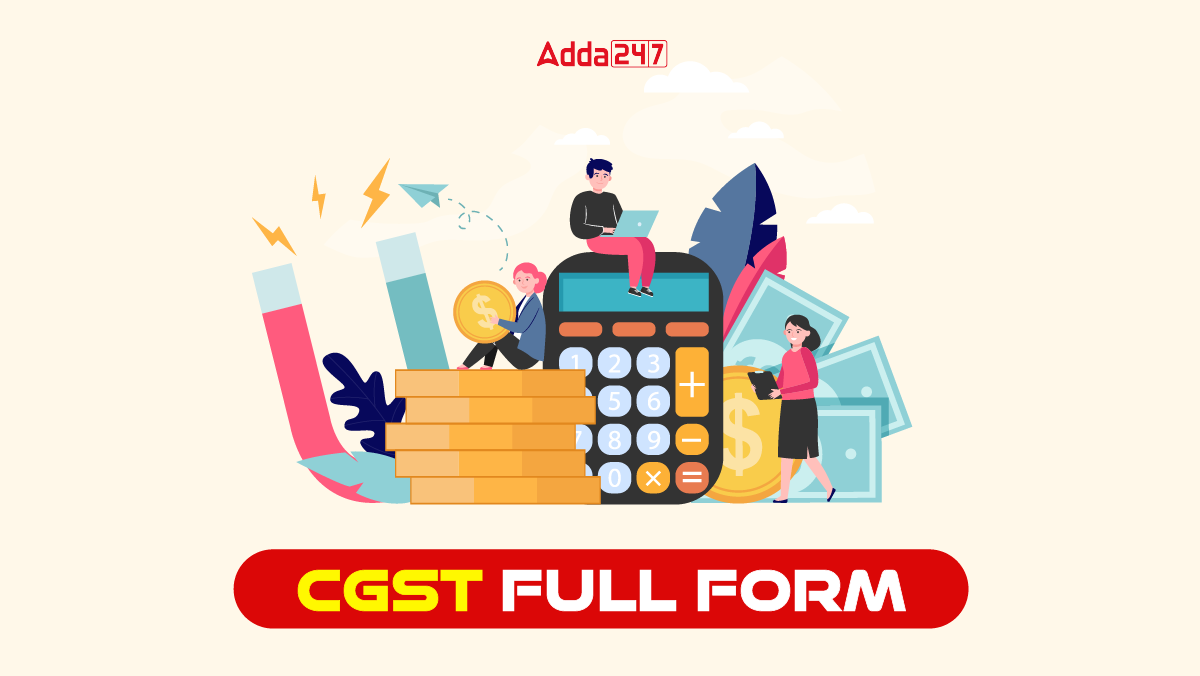CGST Full Form, Central Goods and Services Tax
The full form of CGST is Central Goods and Services Tax, a fundamental element within the Goods and Services Tax (GST) structure in India. GST, introduced in 2017, serves as a unified tax system, replacing multiple indirect taxes at both the central and state levels. CGST holds a crucial position in this taxation framework, as it is imposed and gathered by the Central Government. This article seeks to offer a through insight into CGST, its characteristics and the essential provisions outlined in the CGST Act of 2017.
What is CGST?
CGST is a tax imposed on the supply of services and goods within the boundaries of a state. It is not applicable to transactions occurring outside a state’s jurisdiction. Under the GST law, there are three main components:
- State Goods and Services Tax (SGST)
- Central Goods and Services Tax (CGST)
- Integrated Goods and Services Tax (IGST)
SGST and CGST apply to services and goods within a state, while IGST is levied on transactions that cross state boundaries. The combined rates of SGST and CGST equate to the IGST rate, ensuring tax neutrality.
| Other Important Articles | |
| AAI Full Form | CID Full Form |
| ACD Full Form | POV Full Form |
Why CGST was Created?
In the past, India had many different taxes on various stages of the supply chain, which created problems:
- Taxes couldn’t be offset between the central and state governments.
- State taxes couldn’t be used as credits against other state taxes.
- Different states had different tax rates and laws, causing confusion.
- Various taxes led to high compliance costs for businesses.
Key Features of CGST
Some of the key features of CGST are:
- Replacement of Existing Taxes: CGST was introduced to replace various existing taxes such as excise and service tax, creating a more streamlined and uniform taxation system.
- Availability of CGST Credit: Taxpayers can claim CGST credits against IGST and CGST, allowing for the adjustment of tax liabilities.
- Applicability within the State: CGST is applicable solely within a state’s borders and does not affect transactions occurring outside the state.
- Composition Scheme: Dealers with an annual turnover of up to 50 lakhs have the option to benefit from the composition scheme, simplifying their tax compliance.
- Exemption Limit: A Rs 20 lakh exemption limit is applicable for small businesses, relieving them from CGST liability up to this threshold.
Benefits of the CGST
- Fewer taxes mean lower costs for consumers.
- It simplifies business operations by unifying tax rules across states.
- Easier tax filing and compliance.
- Reduces the cascading effect of taxes, making goods cheaper.
- Expected to create more jobs.
Who needs to Register for CGST?
- Independent suppliers in India.
- Businesses that reach the required turnover threshold.
- Those who want to follow the single tax return rule.
Requirements for Registrations
- Valid PAN
- An Indian mobile number and email address
- Necessary documents and information
- Business location and details
- An authorized signatory with a PAN card
- Indian Financial System Code (IFSC) of the bank
- Correct Indian bank account number
- Jurisdiction details




 Which Crop is known as the King of Oilse...
Which Crop is known as the King of Oilse...
 Which River is known as the Gold River o...
Which River is known as the Gold River o...
 Which Country is Known as the Land of Sp...
Which Country is Known as the Land of Sp...







